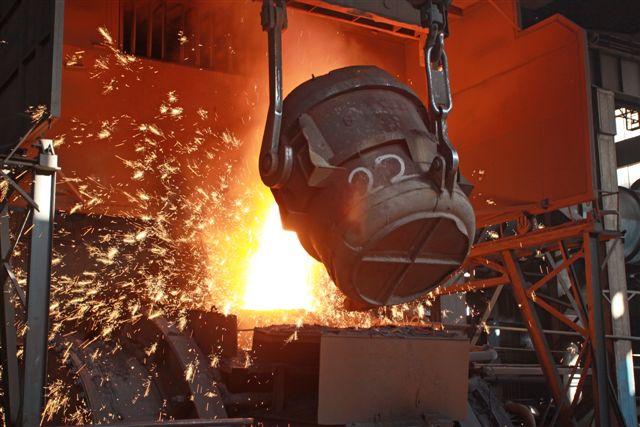Global Crude Steel Production The Numbers Tell the Story
December 5, 2011 Production numbers for crude steel production have been published for October, 2011. They tell an extremely interesting story.
Production numbers for crude steel production have been published for October, 2011. They tell an extremely interesting story.
64 countries around the globe currently produce crude steel regularly and report their production numbers to the World Steel Association, an internationally-recognized agency that closely watches – and reports on – the steel industry.
Is crude steel production up … is it down … is the industry remaining competitive and, perhaps, even flourishing during tough economic times? Look at the numbers and decide for yourself.
Let’s begin with the major countries of the Pacific Rim. Consider Japan. In October, 2011, the period covered by the World Steel Association’s report, Japanese steel companies produced 9.5 metric tons of crude steel, a figure that resulted in a drop in production from the previous October of about 2%.
Other Asian countries, however, produced significantly better results. Korea, for instance, increased its crude steel productivity in October by a whopping 17.8% over the same period from a year earlier.
And China, the world’s largest producer of crude steel produced a monthly output for October, 2011 of 54.7 metric tons. That was an increase over the previous October of 9.7% … very significant.
European Union countries generally did well in October, as well. Italy produced 2.7 metric tons of crude steel, an increase of 9.6% from October, 2010. France experienced an increase of nearly 3%, while NATO partner, Turkey, produced 7.3 metric tons of crude steel, a healthy increase of 12.3% over the same period in 2010.
Steel production also rose in North America where the United States’ output reached 7.3 metric tons for October, 2011. That was an increase over the previous October of 11.3%. In South America, however, Brazil’s crude steel production was sluggish and dropped nearly 3%.
Globally, the 64 countries producing crude steel operated at about 76.5% of capacity, down 2.2% from September, 2011 … and the lowest level reached at any point throughout the year.
And yet, that production level was a full 1% higher than what was reported for the same period in 2010. In fact, total crude steel production for October, 2010 – for all 64 countries combined – reached 124 metric tons.
So … what does it all mean? It seems obvious that crude steel production, with a few exceptions, is increasing. That indicates, of course, that the demand for steel is rising … that construction must be picking up in Asia … in Europe … and in North America.
And if that is true, it may also be true that the long recession is beginning to wind down. While some economic indicators do not show an end to tough economic times, the rise in crude steel production is one indicator that appears to be telling a different, much brighter and more hopeful story.
Is a new and vigorous global economy waiting to “bust out” just over the horizon? It’s probably still too early to know. However, the increase in crude steel production is certainly a very good sign.
Titudin venenatis ipsum ac feugiat. Vestibulum ullamcorper quam.
OTHER ARTICLE & NEWS
-
Chinese Steel Crisis Causes Iron Ore Price To Plummet
May 29, 2014 -
BHP Billiton Prepares To Sell Stake In Guinea Major Iron Ore Deposit
May 17, 2014 -
China Iron and Steel Industry is Facing Tough Times
February 22, 2014 -
$6 Billion Iron Ore Project Fails in Western Australia
June 29, 2013 -
Record Iron Ore Shipment Leaves Australia for China
June 17, 2013 -
Steel Industry Expects to Soar in 2013
March 17, 2013 -
Bluebeam Revu
March 4, 2013 -
Heavy Rains Flood Australian Coal Mines
February 9, 2013 -
NMDC Cuts Prices for Iron Ore…Steelmakers Benefit
January 12, 2013 -
Australian Mining Company Plans Major Plant Construction Project in Africa
December 6, 2012 -
Tekla BIMsight
November 6, 2012